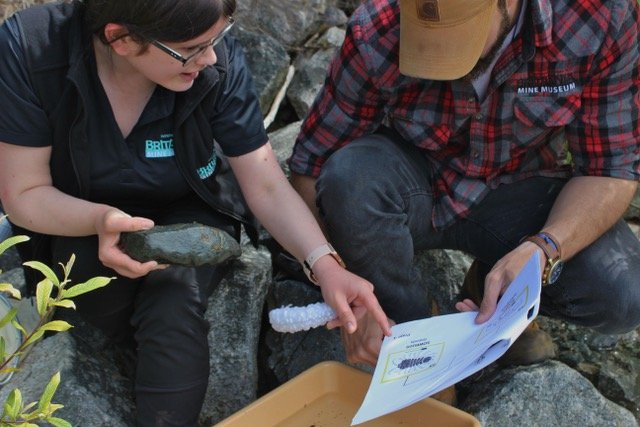
Spring Break at the Britannia Mine Museum just got a little dirtier but a little dirt doesn’t hurt especially with the Museum’s fun, family-friendly, interpreter-led “Mini Mud Monsters” special educational programming inside their Terra Lab STEAM learning space.
Taking place Wednesdays to Sundays (March 15 – 19 and March 22 – 26) from 1:30 p.m. to 4 p.m., the “Live in the Lab: Mini Mud Monsters” drop-in sessions inside the Terra Lab will focus on the important environmental remediation lessons of the Britannia Mine due to acid rock drainage, which occurs naturally when rainwater reacts with oxygen and exposed minerals.
Participants will meet tiny organisms from nearby Britannia Creek and learn how they help us understand the impacts of mining on local ecosystems. Located up the mountain from the Museum, Britannia Creek is a freshwater body that empties into Howe Sound/Átl’ka7tsem, Canada’s 19th UNESCO Biosphere Region. Dissolved metals from the mine due to acid rock drainage were once a significant source of pollution and Britannia Creek was heavily impacted.
Skimming the creek for insect life and looking for pollution-intolerant species can help demonstrate the positive impacts of the Epcor Britannia Mine Water Treatment Plant, which has significantly improved water quality since 2005. The Museum’s Terra Lab is an exhibit and STEAM programming space that allows for public and student engagement on the innovative exploration of sustainable mining, environmental remediation and our move towards sustainable resource extraction.
“We pride ourselves in providing fun, family-friendly yet educational programs that keep inquisitive minds engaged in the science of mineral exploration and environmental remediation,” says Derek Jang, Manager of Interpretive Delivery at the Britannia Mine Museum. “This Spring Break, kids of all ages can immerse themselves and get their hands dirty with our STEAM related Mini Mud Monsters sessions and learn about the tiny organisms that are now thriving in Britannia Creek.”

The Museum is also celebrating “100 Years of the Mill” this year, paying homage to the iconic 20-storey Mill No. 3 building, a National Historic Site which was built in 1923. Throughout this year, the Museum will celebrate the Mill’s history through an exhibition and events which highlight the technology and engineering developed within it, the impacts it made to the mine’s operations and the memories it has for people within the community. More details of the Mill’s Centennial to come in the following weeks.





